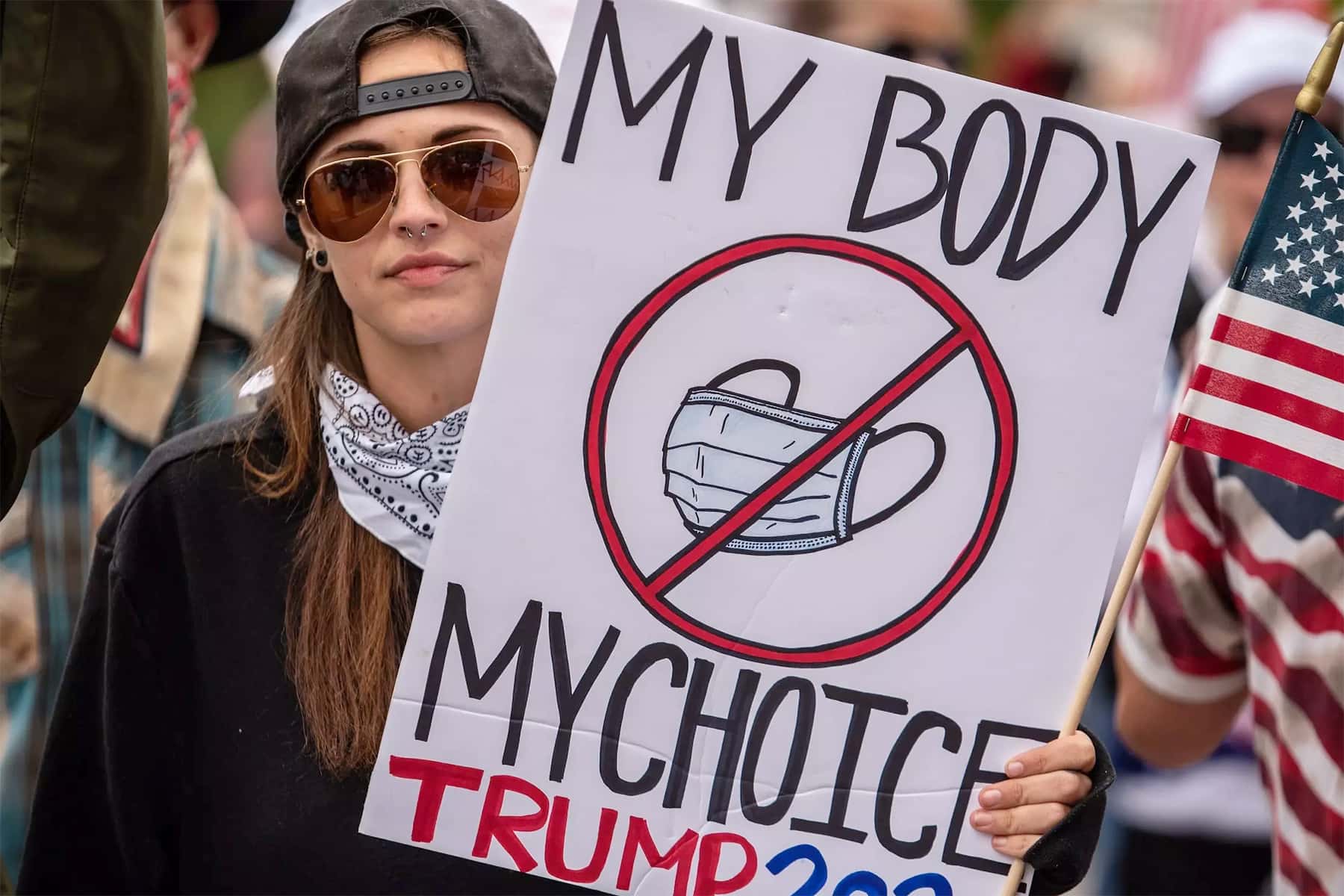WASHINGTON — A group of Stanford University economists who created a statistical model estimate that there have been at least 30,000 coronavirus infections and 700 deaths as a result of 18 campaign rallies President Donald Trump held from June to September.
The numbers, which will surely reignite accusations from Democratic leaders and public health officials that the president is putting voters at risk for political gain, are not based on individual cases traced directly to particular campaign events.
Instead, the Stanford researchers, led by B. Douglas Bernheim, chair of the university’s economics department, conducted a regression analysis. They compared the 18 counties where Trump held rallies with as many as 200 counties with similar demographics and similar trajectories of confirmed COVID-19 cases before the rally date.
The events took place from June 20 to Sept. 12; only the first two — in Tulsa, Oklahoma, and Phoenix — were held indoors. The president has held about three dozen additional rallies since the study ended in September.
Based on their models, the researchers concluded that on average, the 18 events produced increases in confirmed cases of more than 250 per 100,000 residents. Extrapolating that figure to the 18 rallies, they concluded that the gatherings ultimately resulted in more than 30,000 confirmed cases of COVID-19 and that the rallies had “likely led to more than 700 deaths,” though those deaths would not necessarily have occurred solely among attendees.
The paper, posted on academic websites and on Twitter by its authors days before the presidential election, is likely to be contentious. Public health officials in states and counties where Trump has held rallies said in interviews this week that it was impossible to tie particular infections or outbreaks to the gatherings for several reasons: Caseloads are rising overall, rally attendees often travel from other locations, contact tracing is not always complete, and contact tracers do not always know where infected people have been.
Judd Deere, a White House spokesperson, dismissed the study as “a politically driven model based on flawed assumptions and meant to shame Trump supporters.”
“As the president has said, the cure cannot be worse than the disease,” Deere said in a statement Saturday. “This country should be open armed with best practices and freedom of choice to limit the spread of COVID-19.”
The study is a “working paper” and has not yet been submitted for peer review, Bernheim said in an interview Saturday. He said it was common practice for economists to post their work online before submitting it to an academic journal so that other experts could comment on it. He said politics was not the motivation for it.
“The motivation for this paper,” he said, “is that there is a debate that is raging about the trade-off between the economic consequences of restrictions and the health consequences of transmission, and as an economist, I take that debate to be both important and appropriate.”
Since the president resumed holding political rallies in June, he has faced intense criticism over them. Public health officials in Tulsa, the site of the first rally, have said a subsequent surge in coronavirus cases was most likely tied to it.
A little more than two weeks after the event, Tulsa recorded 206 new confirmed coronavirus cases in a single day, a record high at the time. Herman Cain, a former Republican presidential candidate, died of COVID-19 after attending the rally, although it is impossible to know whether he was infected there.
Around the country, state and local public health officials have also wrestled with the question of whether Trump’s rallies have become so-called superspreader events. With thousands of people gathered together in close quarters, many not wearing masks, the gatherings provide a fertile environment for the virus to spread.
In Minnesota, for example, state officials traced 16 coronavirus infections and two hospitalizations to a Trump rally on Sept. 18 in the city of Bemidji, in Beltrami County. Trump’s Democratic opponent, Joe Biden, who wears masks and encourages his supporters to do so, held his own campaign event that same day in Duluth; it resulted in one coronavirus infection, but no hospitalizations.
But Doug Schultz, a spokesperson for the Minnesota Department of Health, said that the full extent of the spread that had resulted from those cases was difficult to quantify, because many people who develop COVID-19 are asymptomatic or have mild symptoms and do not seek treatment, and even those who test positive may not respond to contact tracing inquiries.
“What we are seeing in Beltrami County are indicators of transmission, and this is likely just the tip of the iceberg,” Schultz said in an email.
Many Trump supporters have complained that focusing on the risk posed by the president’s rallies ignores the risk posed by other large gatherings, like the Black Lives Matter protests over the summer. But Bernheim said that because the rallies are isolated events with a finite beginning and end, they are “cleaner events to study” than protests, which can occur over several days.
Assessing the risk of campaign rallies is “a noisy process,” Bernheim said, and focusing on a single event is misleading. His paper noted that there had been similar, smaller analyses — including one based on the Tulsa rally that found no significant effect. But, it said, “measuring the average treatment effect over multiple events, as in our study, produces more reliable results.”
This article originally appeared in The New York Times.



No comments:
Post a Comment
If you support Trump you deserve cancer.